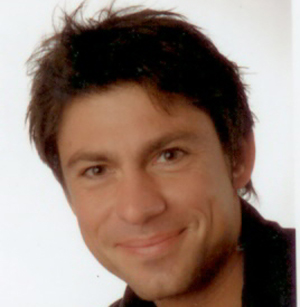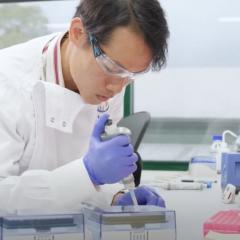
Patients experiencing communication problems after having a stroke could see long-term benefits from low-current electrical stimulation therapy, according to an international study led by The University of Queensland.
The therapy could revolutionise treatment for patients with aphasia, a common condition in those who have had a stroke, affecting the ability to speak, read, write and understand what others are saying.
Associate Professor Marcus Meinzer, from the UQ Centre for Clinical Research, said transcranial direct current stimulation was non-invasive and painless, and used a constant low current delivered to the brain via electrodes on the scalp.
“We worked with the Department of Neurology at the Charité University Hospital in Berlin, Germany, to test the benefits of transcranial direct current stimulation on stroke patients with aphasia,” Associate Professor Meinzer said.
“To test the therapy, we compared the language ability and everyday communications skills of two groups of stroke patients with aphasia.
“The first group received language therapy combined with transcranial direct current stimulation, while the second group received language therapy alone.”
He said the study showed for the first time that transcranial direct current stimulation could provide significant and lasting benefits for patients with chronic aphasia.
“While the therapy is commonly used in patients who have had a stroke, we have not had any evidence until now that transcranial stimulation has long-term benefits for patients with aphasia,” Associate Professor Meinzer said.
The team found a way to make the treatment easier and less expensive for patients and doctors.
“Until now, it has been standard practice for doctors to perform expensive scans of patients’ brains to see which areas need to be targeted for treatment,” Associate Professor Meinzer said.
“We used a new approach, targeting just one area of the brain – the motor cortex – for therapy..
He said the motor cortex acted as a bridge to reach parts of the language cortex in the brain left undamaged by stroke.
“By stimulating the motor cortex, we were able to stimulate the undamaged language regions in the brain and facilitate the development of language in affected patients.
“This approach which may help a significant portion of patients with aphasia to further improve their language – months, or even years, after having a stroke.
“Most importantly, it tells us that doctors do not have to scan patients individually to find which parts of the brain are affected by the stroke, and this will significantly reduce the cost and feasibility of treatment in the future.”
The research is published in Brain: A Journal of Neurology.Media: UQ Faculty of Medicine and Biomedical Sciences, Kate Gadenne, k.gadenne@uq.edu.au, +61 7 3365 5018/0438 727 895.



